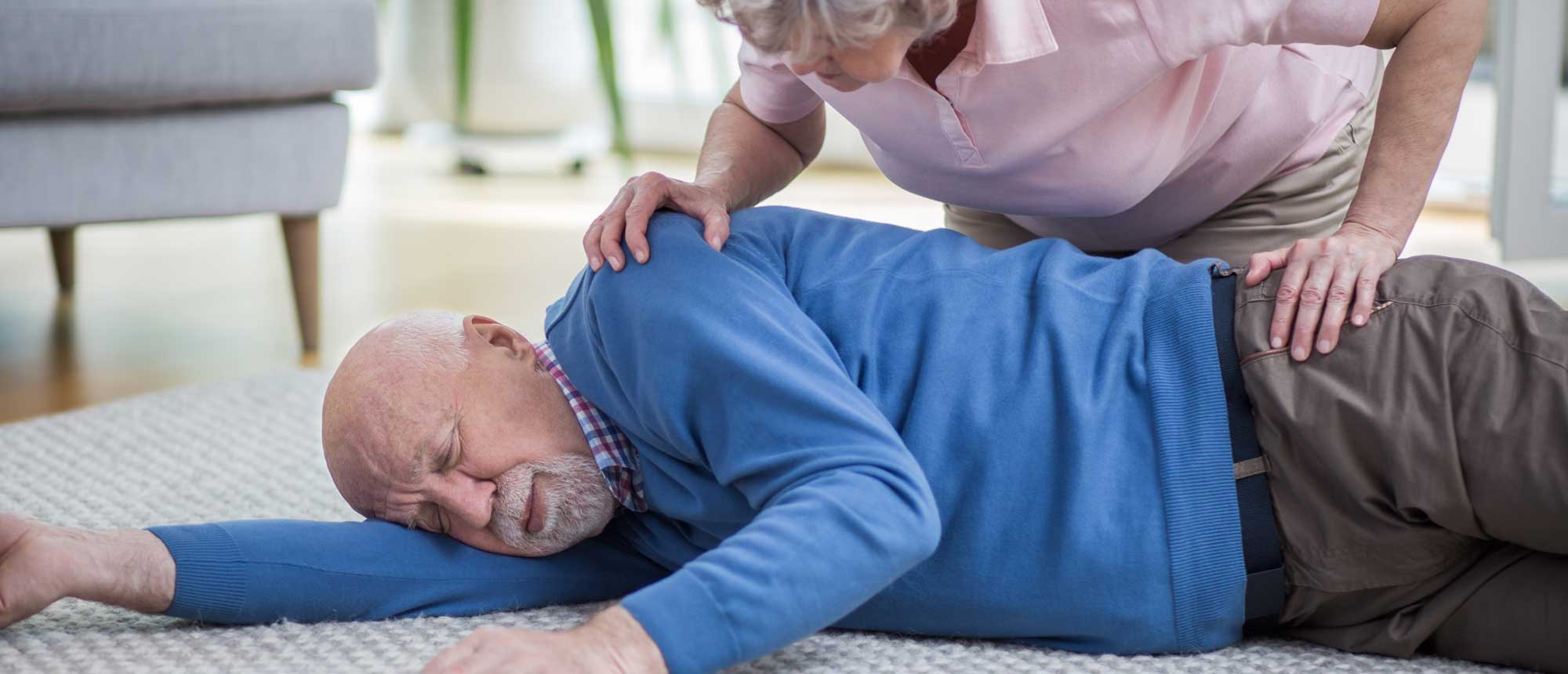16 Oct 3 Basic Steps to Increase Fall Prevention for Seniors | Family Tree In-Home Care
Every year, 3 million of America’s senior citizens are treated in emergency departments for injuries suffered during a fall. Of those, one in five will suffer a broken hip or head trauma. These numbers are shocking, and they really don’t need to be as high as they are with fall prevention. By taking a few simple steps, caregivers can dramatically decrease the odds that their loved one will suffer a fall.
3 Basic Steps to Increase Fall Prevention for Seniors

Caretaker assisting a senior man with a walker.
While it’s impossible to eliminate risk completely, these three steps have been proven to have the highest effectiveness in lowering fall risks for seniors.
Step 1: Evaluate Pathways
Many seniors trip while walking well-traveled home pathways. A major part of fall prevention is evaluating the senior’s living environment and asking what steps you can take to lower or eliminate these risks.
- If the flooring is slippery (such as in the hallway or bathroom), put in non-slip runners.
- If throw rugs are merely decorative, consider rolling them up for storage. (More on this below.)
- Install grab bars in high-risk areas: bathrooms, stairways, etc.
Step 2: Clear It Out
As you’re considering how best to clear pathways for your senior, consider helping them downsize. By selling, storing, or condensing unnecessary items, you’re automatically lowering the chances that your loved one will trip and fall, since fewer items means fewer items to trip over.
- Sell or store excess furniture
- Eliminate all unnecessary clutter
Step 3: Let There Be Light
The problem here is not necessarily that a senior’s home is lit poorly in a general sense: it’s that a senior’s eye no longer processes light the way it once did.
Nearly all the structures that bend, guide, and transform light entering the eye change with age—some dramatically, some only slightly—reducing the amount of light reaching the retina. In fact, eye specialists have estimated that the retina of a 60-year-old typically receives one-third the light of a 20-year-old’s retina. (NCBI)
Because of this dynamic, we should do all we can to bring more light to our seniors’ environments.
- Eliminate heavy draperies to maximize natural light
- Add more hanging/overhead light fixtures
- Swap in higher-watt bulbs
We Can Help
Here at Family Tree In-Home Care, we’re committed to helping seniors stay safe at home. To hear more about this issue, please contact us at any time. We look forward to hearing from you!


